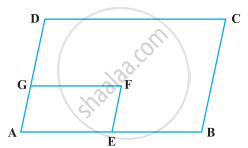Advertisements
Advertisements
प्रश्न
In the given figure, ABCD is a parallelogram.
Prove that: AB = 2 BC.
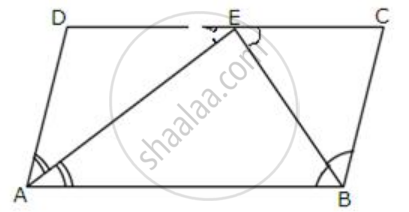
उत्तर
Given ABCD is a parallelogram
To prove: AB = 2BC

Proof: ABCD is a parallelogram
A + D + B + C = 180°
From the AEB we have
⇒ `("∠A")/(2) + ("∠B")/(2)` + E = 180°
⇒ ∠A - `("∠A")/(2)` + ∠D + ∠E1 = 180° ...[taking E1 as new angle]
⇒ ∠A + ∠D + ∠E1 = 180° + `("∠A")/(2)`
⇒ ∠E1 = `("∠A")/(2)` ...[Since ∠A + ∠D = 180°]
Again,
similarly,
∠E1 = `("∠B")/(2)`
Now
AB = DE + EC
= AD + BC
= BC + BC
= 2BC ...[since AD = BC]
Hence, proved.
APPEARS IN
संबंधित प्रश्न
The alongside figure shows a parallelogram ABCD in which AE = EF = FC.
Prove that:
- DE is parallel to FB
- DE = FB
- DEBF is a parallelogram.
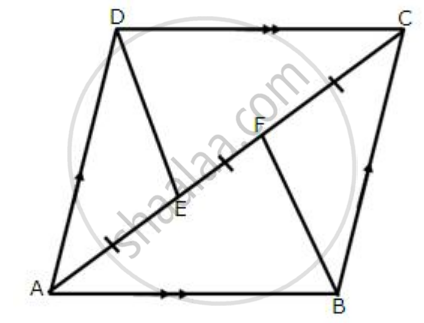
In the alongside diagram, ABCD is a parallelogram in which AP bisects angle A and BQ bisects angle B.

Prove that:
- AQ = BP
- PQ = CD
- ABPQ is a parallelogram.
Prove that the bisectors of opposite angles of a parallelogram are parallel.
The following figure shows a trapezium ABCD in which AB is parallel to DC and AD = BC. 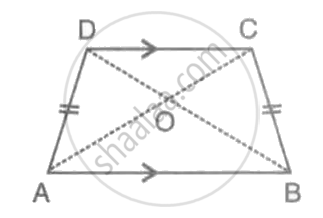
Prove that:
(i) ∠DAB = ∠CBA
(ii) ∠ADC = ∠BCD
(iii) AC = BD
(iv) OA = OB and OC = OD.
In parallelogram ABCD, the bisector of angle A meets DC at P and AB = 2 AD.
Prove that:
(i) BP bisects angle B.
(ii) Angle APB = 90o.
PQRS is a parallelogram. T is the mid-point of PQ and ST bisects ∠PSR.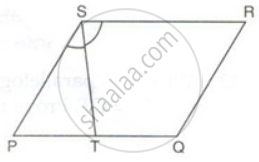
Prove that: ∠RTS = 90°
In the given figure, MP is the bisector of ∠P and RN is the bisector of ∠R of parallelogram PQRS. Prove that PMRN is a parallelogram.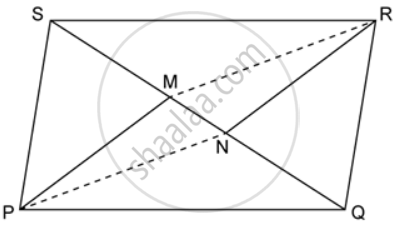
In a parallelogram ABCD, E is the midpoint of AB and DE bisects angle D. Prove that:CE is the bisector of angle C and angle DEC is a right angle
Which of the following statement is correct?
In the following figure, ABCD and AEFG are two parallelograms. If ∠C = 55º, determine ∠F.
